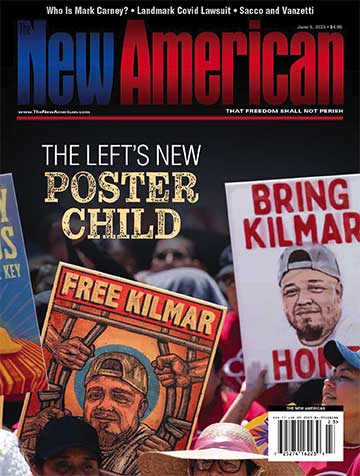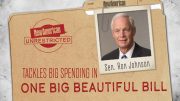
The “misery index” shows Vice President Kamala Harris likely to win the presidential election in November.
The index, aka the “economic discomfort index,” was developed under the administration of Lyndon B. Johnson, who assumed the presidency in November 1963 following the assassination of then-President John F. Kennedy. Johnson wanted a simple number to see how the economy was doing, and the misery index was contrived by his chief economic advisor, Arthur Okun.
Since its inception the index has shown a remarkable ability to predict presidential winners. The more unhappy the electorate, the greater the chances are that the incumbent will be turned out of office in the next election.
It consists simply of adding two numbers together: the annualized rate of inflation and the present unemployment rate. Published monthly by the federal Bureau of Labor Statistics (BLS), it is currently at 6.731. This means nothing to the casual observer, but to Strategas Research Partners it means that, barring a significant change in those numbers over the next 30 days, Harris — considered the incumbent in this case —will beat Donald Trump in the presidential election.
Persuasive Correlation
Based on its research into the correlation between the misery index and presidential elections, Strategas believes that any number above 7.353 will result in the incumbent being ousted from office. Any number below will keep the incumbent in office.
Daniel Clifton, Strategas’ head of research, was covering his bets, however. On Tuesday morning he called the race “extremely close,” adding that “the stakes are as high as we have seen them going into a debate given how tight the race is.”
On the surface the validity of the misery index appears undeniable. The index was at 12.7 when President Gerald Ford’s presidency was ended in favor of Jimmy Carter in 1976. The index ticked even higher at the end of Carter’s presidency, when he was voted out of office in favor of Ronald Reagan in 1980.
Could the Misery Index Be Wrong This Time?
The New American has tracked the U.S. economy’s accelerating descent into recession for months, noting economic indicators and even the “indicator of indicators” showing a recession just ahead. This would suggest a high misery index. So consider a few things:
First, the two factors of the misery index — the unemployment rate and the annualized inflation rate — are “lagging” indicators, not “current” or “leading” indicators.
Second, the index tracks presidential races where an incumbent is running for reelection, and Harris is not really an incumbent (she never received a single vote in any primary, nor did any voter have a say in how she was picked to become the presidential candidate). In fact, her unfavorability rating is such that she was forced to terminate her presidential run in 2020 even before the first primary.
But the most telling argument against using the “misery” or “economic discomfort” index to predict the outcome in November is this: The index is published by the government’s BLS, using government numbers also reported by the BLS.
For years John Williams has made a living by calling out the falsity of those numbers. At the moment, his website Shadowstats.com is reporting that the real inflation rate is not 3 percent, but instead is well above 10 percent. And he has consistently called the unemployment rate published by the BLS too low, figuring it to be at least 10 percent higher than the BLS figure.
Misery for Harris?
If Williams is anywhere close to being right, the misery index would spell misery for Harris, with it properly clocking in at a disastrous 27.
Put another way: Using real world numbers, Okun’s misery index shows Trump trouncing Harris in November.
Related articles:
U.S. Consumer Continues to Struggle, Says New York Fed
Fed Beige Book’s Anecdotes Reveal Weakening Economy




